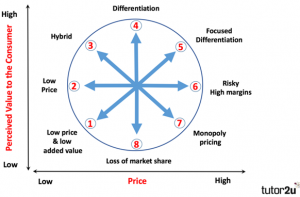The Aldi Brand Case Study Solution
On the other hand, Coles and Wool worths were initially just focused on selling national brands with an extensive product line to a large consumer base. Both of the brands hadn’t put any emphasis on private label brands initially, but now both the brands are considering to shift their focus on private label brands, with Coles considering a single while Wool worths considering multiple private label brands.
Other two new entrants including Amazon and Lidl are also focused at private label brands. This implies that the segment in which Aldi has a strong foothold is now susceptible to change with the entrance of certain new and old players in the market segment. In this scenario, Aldi must consider different and innovative as well as highly efficient strategic initiatives to deal with the situation.
Value Propositions:
Another major area that could be discussed for evaluating the business model of Aldi and its peers is the evaluation of the value preposition that Aldi and its competitors provide to their customers through selling products via various techniques. Aldi is focused on value preposition to its customers who seek competitive products at lower prices. The company offers limited lines which are dominated by private labels in order to meet the needs of the value conscious customers and to provide them a superior quality products in order to create value to its customers. Aldi’s strategy is to focus on providing high quality food at discount rates or low prices in order to reduce the daily expenses of the consumers, and to create value to the end customers. (Osterwalde, Pigneur, Bernarda,, & Smith)
Customer Relationships:
Aldi has a strong relationship with its customer. Aldi has captured those consumers who seek low priced quality products. The company offers competitive products at lower prices and continuously offers its products with lucrative discount offers for the discount seeking grocery shoppers in order to reduce their daily expenses and increase their value for money spending and satisfaction.(unknown, n.d.)
Key Partnerships:
Aldi has a strong long term relationship with their supplier in order to produce the quality product and meet the standards. As the continuous growth in the sales of the company, the company buys the raw material and the products in bulk quantity by which the company could easily avail the discount and provide low cots to their end consumers. Aldi has been narrowing the range of the products in order to maintain the quality and the cost associated with the logistics and distribution. It has built simple warehouses in order to reduce the cost. The strong association with the company’s supplier enables Aldi to provide high quality products at low prices. The strong long term relationship with the suppliers will help the company inretaining the potential consumer along with the consistent quality products at lower prices.
Organizational Structure:
The structure of the Aldi is composed of formal structure and minimization of functions. Staff of the company is also known as internal stake holders which can help the company in order to build the culture and efficiencies. In order to avoid misunderstand and quick decision making the company has formal and clear reporting lines in which each staff knows when and to whom to report, and rules and regulations about reporting. Aldi is not using so many functions in order to reduce the complexity and minimization of cost. The layout of the company’s stores are simple. It has small super markets around the globe, while its competitors have bigger stores. The company produces in bulk quantity while narrowing the range in order to reduce the cost linked with stocks and logistics and increase the operational efficiencies. The company is also using a low technology in order to reduce the complexity and cost.
Recommendations
From the above analysis, it could be said that although the value proposition strategies and the business model followed by Aldi including its strong partnership relations, customers’ focused strategies, cost leadership, led to the company’s growth for two decades, but, in the changing industry environment, Aldi must put efforts to change its strategic position in long run to mitigate the external risks posed by the new entrants and the existing competitors. Aldi must revise its current strategic position. In this situation, Bowman Model could be implemented to explore various strategic positions for Aldi to come up with these market risks. (Fernando, 2017)
As stated above, Aldi is currently positioned as low price brand in the Bowman Clock. However, the firm could also explore various other strategic position using the Bowman clock. Aldi would also position themselves on hybrid (combination of low price and differentiation). By using the hybrid position Aldi would sell its products at competitive prices and to retain their customers by differentiating (value adding) its products from its competitors’. The company could also use the differentiation position for their products in which the prices of the company’s product is relatively moderate in order to provide the different product to their consumer in comparison to their competitors’. Aldi can also use the focused differentiation in which the prices of the products are relatively high in comparison to the competitors’ but the customers buy the product due to high perceived value, which is not considered in the other competitors’ product.
Appendix:
BOWMAN Model
This is just a sample partical work. Please place the order on the website to get your own originally done case solution.
How We Work?
Just email us your case materials and instructions to order@thecasesolutions.com and confirm your order by making the payment here












